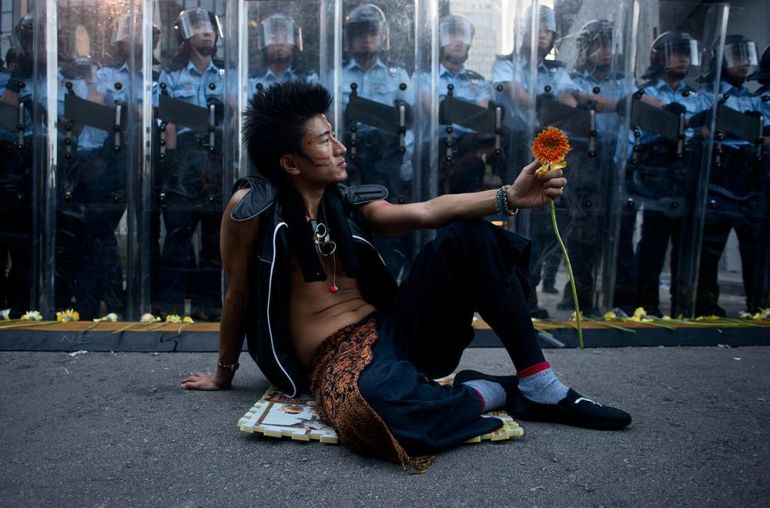In Pictures
In Pictures: The height of Hong Kong protests
Unprecedented in size, massive occupations of areas in Hong Kong piled on pressure for democratic reform by China.

Hong Kong, China – Hong Kong protests appeared to be running out of steam on Monday after 11 days of intense demonstrations demanding that China implement electoral reform to allow people to pick the leader of their choice.
Even though the upcoming election in 2017 will give Hong Kong citizens a vote for their leader for the first time, the current system restricts the candidates to those put forward by a pro-Beijing committee.
Hong Kong has enjoyed political autonomy and freedom since its return from British rule to China in 1997 under a formula known as “one country, two systems”. Chinese leaders agreed then that the “chief executive” of Hong Kong would be directly chosen through democratic elections in 2017, but Beijing has not kept that promise.
Unprecedented in size, protests and massive occupations of areas on Hong Kong Island and Kowloon have put pressure on the government by stifling its activities and commerce in one of Asia’s major financial centres.
While the protesters were mostly peaceful, police fired tear-gas and pepper-spray to disperse them, and violent confrontations erupted with pro-government supporters. After stern warnings by the Hong Kong government to clear out, protesters started leaving the occupied spaces.













